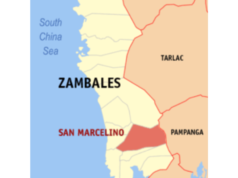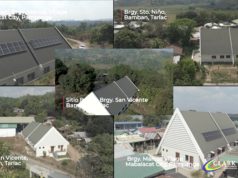LAST JUNE 27, the regional office of the Bureau of Fisheries and Aquatic Resources (BFAR) — a line agency of the Department of Agriculture — announced the start of the fishing ban in Davao Gulf. The 3-month ban and will end on August 31.
According to a news report, the fishing ban is being implemented “to conserve marine resources and to secure the spawning period of pelagic fishes.” BFAR 11 Director Fatma Idris was quoted as saying that spawning season of the gulf’s pelagic fishes, based on their study, starts from June until September.
Davao Gulf, with an area of 308,000 hectares, cuts into the island of Mindanao from Philippine Sea. The World Wildlife Fund considers Davao Gulf as one of the most diverse marine ecosystems in the world. Diverse coral reefs, different mangrove species, cetaceans and a host of invertebrates contribute to the natural diversity of the gulf.
Davao Gulf is Southern Mindanao’s fishing ground. In fact, it is the 10th major fishing ground in the country. As such, “Davao Gulf is a critical resource supporting the economies of six coastal cities and 18 coastal municipalities,” says the Davao Gulf Management Council (DGMC), composed of all the local government units surrounding the gulf.
“There is what we call a maximum sustainable yield or MSY,” Idris told the media who attended a press briefing at the Philippine Information Agency. “Based on our research, Davao Gulf has already reached and exceeded the MSY and there was a decline in the catch of small pelagic fishes.”
Her statement confirmed a previous study undertaken by the World Fish Center. Since 2000, the volume and quality of the fish in the Davao Gulf have been in constant decline, according to the 10-year study entitled “Strengthening Governance and Sustainability of Small-scale Fisheries Management in the Philippines: An Ecosystem-based Fisheries Management Approach in Davao Region.”
A collaborative effort of the BFAR, local government units and the regional office of the Department of Science and Technology, the study looked at the volume and quality of the harvests of 10 commonly fished species in the gulf: matambaka, tamban, moro-moro, caraballas, bilong-bilong, lapu-lapu, danggit, molmol, talakitok, and maya-maya.
Except for maya-maya, the harvest numbers for the species have been falling. At the current rate of decline, the caraballas, bilongbilong, molmol, and danggit may all disappear completely from Davao Gulf within a decade, the study said.
The matambaka, tamban and moro-moro are more resilient, but even they may disappear within a generation, it added. But it’s not only in Davao Gulf that the situation is happening. “Like the other vital resources such as forests, Philippine fisheries are about to collapse,” deplored Roy C. Alimoane, the director of Mindanao Baptist Rural Life Center (MBRLC), a non-government organization based in Davao del Sur.
Overexploitation has been cited as one of the culprits why fi sh catch has been declining. Oceans, which are global common property resources, are open with few limitations to all takers. Vessels from wealthier countries dominate the ocean catch.
Although fish stocks are a renewable resource, many of them are strained to the limit. “Over the years, they have suffered from a widespread notion that the seas are inexhaustible and economic pressures that have encouraged overexploitation,” Alimoane said.
Marine experts claim that all fishing activities depend on a fragile resource base which, if mismanaged and overexploited, can easily collapse. “Overfishing is the primary cause of dwindling fish population,” notes Peter Weber in his book, Net Loss: Fish, Jobs and the Marine Environment.
Fishing ban is one possible solution to the problem. “Given the decline of fishery resources, there has to be a closed season in Davao Gulf,” Councilor Leo Avila III pointed out. “Expect that by the end of this year, we will be able to replenish the stock of small pelagic fishes.”




